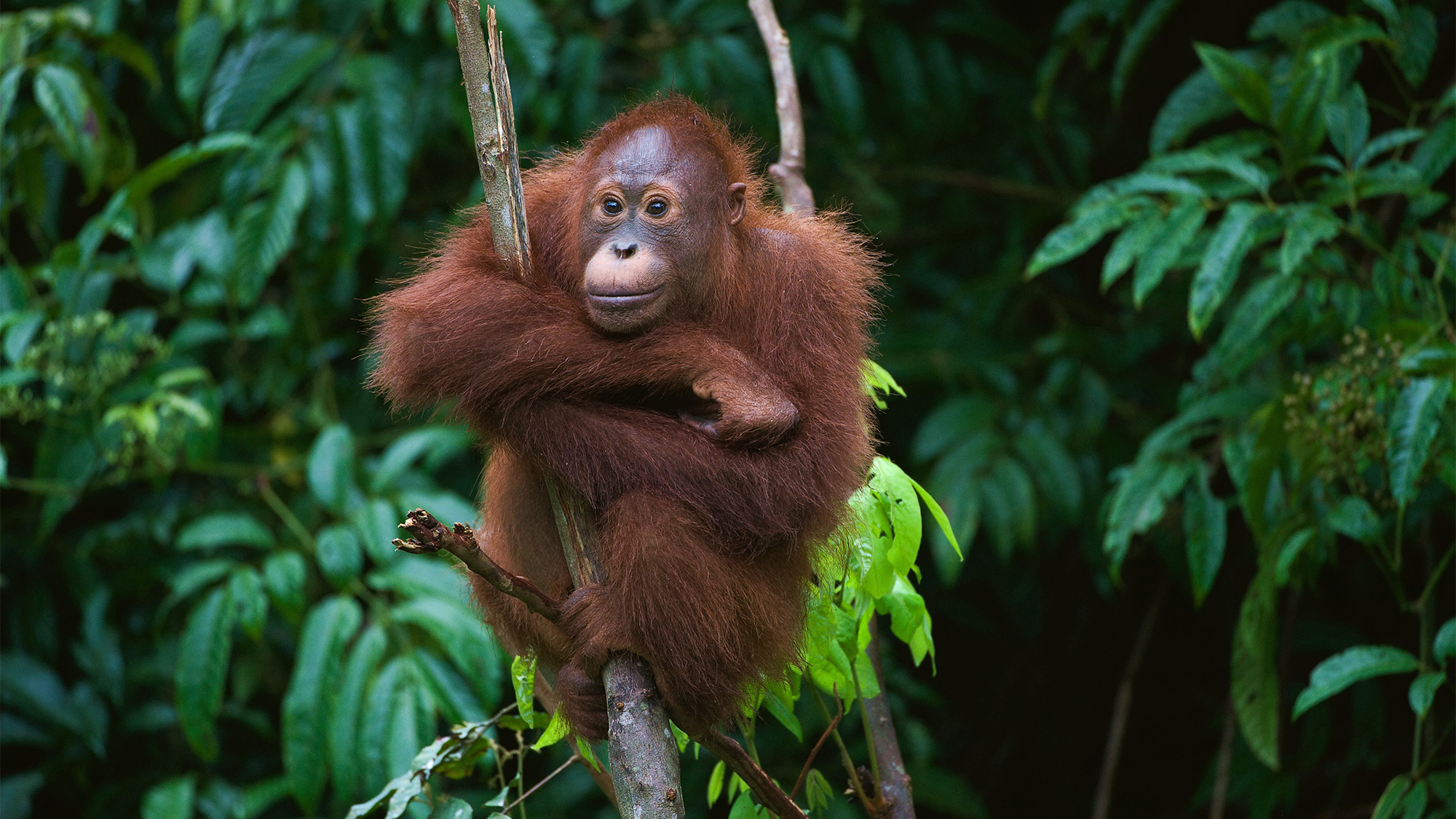

Across the planet, there are roughly 7,000 languages spoken by humans. But, how humans got to be such robust conversationalists is a bit of a mystery.
A new study published Tuesday in the journal Trends in Cognitive Sciences could show a bit more of the link between human speech and sounds that our animal cousins make. The new research finds that orangutans produce consonant-like calls more often and of a greater variety than their African ground-dwelling cousins (gorillas, bonobos, and chimpanzees).
While orangutans and humans share about 97 percent of their DNA, chimpanzees and bonobos are more closely related to our species. Since orangutans still exhibit this robust vocal repertoire, the location where our non-human primate ancestors lived might be another crucial piece of the puzzle in understanding the origins of human speech.
Orangutans are the most arboreal-or tree dwelling-of the great apes. Whether an ape lives among trees or on the ground may have driven the development of different vocal repertoires.
[Related: Artificial intelligence is helping scientists decode animal languages.]
This study suggests that human’s evolutionary ancestors may have lived a more tree-dwelling lifestyle than previously believed since a larger and more varied body of consonant-like calls arose in arboreal apes like orangutans.
“Existing theories of speech evolution have thus far, focused exclusively on the connection between primate laryngeal anatomy and human use of vowels,” Adriano Lameira, associate professor of psychology at the University of Warwick, said in a statement. “This doesn’t explain though, how voice-less, consonant-like sounds became a fundamental component of every language spoken around the globe.”
All spoken languages are composed of both vowels and consonants. Vowels are almost always voiced produced by the larynx. Consonants are typically more voiceless and produced by moving the supra-laryngeal articulators, such as, the lips, tongue, and mandible.
Lameira investigated the origins of human spoken language, which is universally made up of vowels that take the form of voiced sounds, and voiceless sounds in the form of consonants. However, the calls of non-human primates are primarily composed or exclusively made up of voiced vowel-like sounds.
“This raises questions about where all the consonants, that compose all the world’s languages, originally come from,” said Lameira.
The study compares the patterns of consonant-like vocal production in three major great ape linages– orangutans, gorillas, bonobos, and chimpanzees. Their call repertoire features sounds that are similar to both vowels and consonants, but there are inconsistencies within how great apes use consonant sounds in nature.
“Wild gorillas, chimpanzees and bonobos don’t use a huge variety of consonant-like calls,” Lameira explained. “Gorillas for example, have been found to use a particular consonant-like call, but this is only prevalent in some gorilla populations and not others. Some chimpanzee populations produce one or two consonant-like calls associated with a single behaviour, for example while they are grooming, but these same grooming calls are uncommon in other chimpanzee populations.”
Wild orangutans use consonant-like calls for multiple behaviors consistently and universally, similar to what humans do with speech.
According to Lameira, orangutans have a diverse array of smacking, clicks, kiss-sounds, splutters, and raspberries within their vocal repertoire. Some of the aspects of an arboreal lifestyle and feeding habits could help explain the sophistication and complexity of their consonant-like calls.
“All apes are accomplished extractive foragers. They have developed complex mechanisms to access protected or hidden foods like nuts or plant piths, which often requires either meticulous use of hands or tools,” said Lameira.
[Related: Foraging in trees might have pushed human ancestors to walk on two feet.]
Terrestrial dwelling apes such as chimpanzees and gorillas use the stability of the ground to handle food and use tools, but orangutans need at least one of their limbs to be stable when accessing and handling food.
“It is because of this limitation, that orangutans have developed greater control over their lips, tongue and jaw and can use their mouths as a fifth hand to hold food and [maneuver] tools,” said Lameira. “Orangutans are known for peeling an orange with just their lips so their fine oral neuro-motoric control is far superior to that of African apes, and it has evolved to be an integral part of their biology.”
This speech research mirrors a recent study that argues human ancestors transitioned to two-footed movement as a way to better forage for food among tree branches. These new findings could revise a long-standing theory of how human bipedalism evolved.
The more we learn about our relatives and ancestors’ relationship with tree-filled environments, the more scientists can put together a picture of how humans came to be.